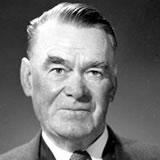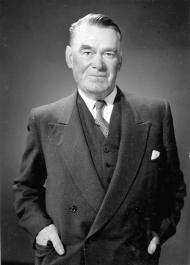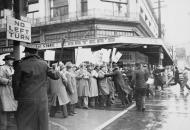The legislation aimed to end the gender pay gap in the private sector, following earlier legislation which addressed the pay gap for the public service.
Trade Unions
Events In History
The waterfront dispute of 1951 was the biggest industrial confrontation in New Zealand’s history, lasting for five months, from February to July. At its peak, 22,000 waterside workers and other unionists were off the job.
The first working women’s conference aimed to link women with working-class organisations, and was supported by the Communist Party of New Zealand.
The ‘Battle of Featherston Street’, in downtown Wellington, saw some of the most violent street fighting of the 1913 Great Strike.
Violent clashes between unionised waterside workers and non-union labour erupted two days after Wellington’s ‘wharfies’ held a stopwork meeting in support of striking shipwrights.
The Industrial Conciliation and Arbitration (IC&A) Act made New Zealand the first country in the world to outlaw strikes and introduce compulsory arbitration.
The first women’s trade union in New Zealand emerged in the late 19th century in response to poor working conditions in the clothing industry.
Articles
Labour Day

Celebrated on the fourth Monday in October, Labour Day commemorates the struggle for an eight-hour working day, a right that carpenter Samuel Parnell had famously fought for in 1840. Our first Labour Day was held on 28 October 1890, and it has been a statutory public holiday since 1900. Read the full article
Page 1 - Labour Day
Celebrated on the fourth Monday in October, Labour Day commemorates the struggle for an eight-hour working day, a right that carpenter Samuel Parnell had famously fought for in
The 1951 waterfront dispute
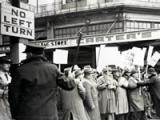
The 1951 waterfront dispute was the biggest industrial confrontation in New Zealand’s history. Although it was not as violent as the Great Strike of 1913, it lasted longer – 151 days, from February to July – and involved more workers. Read the full article
Page 2 - Countdown to confrontation
New Zealanders generally accepted the hardships and restrictions of the war years as necessary in the fight against fascism. After the war, though, many began to demand a greater
Page 3 - War on the wharves
With New Zealand’s vital export trade at stake when the wharves came to a standstill, the government declared a state of emergency on 21
Page 4 - Division and defeat
The watersiders’ militancy had isolated them from most unionists and Walter Nash’s Labour Party Opposition sat uncomfortably on the fence, denouncing government repression but
1947 Greymouth beer boycott

What would it take for West Coasters to boycott their beloved beer? Greymouth hotel-keepers found out in 1947, when an organised attempt to raise the price of beer sparked one of the most effective consumer boycotts ever seen in New Zealand. Read the full article
Page 3 - The boycott begins
In mid 1947 there were rumours that the price of beer was about to rise. It was a decision that no publican wanted to take alone because customers might move to another hotel
Page 4 - Industrial action
After the first week of the Greymouth beer boycott it became clear that the Licensed Victuallers' Association (LVA), supported by the breweries, was not going to yield.
Merchant marine
On 3 September New Zealand honours Merchant Navy Day. Here we explore the little-known but vital role played by the merchant marine during the First World War, when these civilian seafarers often found themselves in the front line of the war at sea. Read the full article
Page 8 - Politics, patriotism and protest
Although New Zealand seafarers served in many hostile theatres, some questioned the politics of the
The 1913 Great Strike
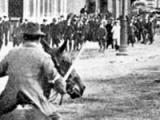
The Great Strike of 1913 was in fact a series of strikes between mid-October 1913 and mid-January 1914. It was one of New Zealand’s most violent and disruptive industrial confrontations. Read the full article
Page 1 - The 1913 Great Strike
The Great Strike of 1913 was in fact a series of strikes between mid-October 1913 and mid-January 1914. It was one of New Zealand’s most violent and disruptive industrial
Page 2 - Class war comes to the workers' paradise 1890-1913
History of New Zealand's employment relations,
Page 3 - Outbreak of the 1913 strike
The 1913 Great Strike was sparked off by two relatively small
Page 4 - The 1913 strike in Wellington
Because the strike threatened their livelihoods, rural men were keen to volunteer as special
Page 5 - The 1913 strike in Auckland
Watersiders in Auckland began to strike in support of those in Huntly and
Page 6 - The 1913 strike in the South Island
Although the 1913 strike had its biggest impact on Auckland and Wellington, the South Island's cities and mining towns were also
Page 7 - The defeat of the 1913 strike
The seizure of the wharves in Wellington and Auckland greatly reduced the strikers’ industrial power. Similar takeovers by ‘scab’ arbitration unions soon happened in other









